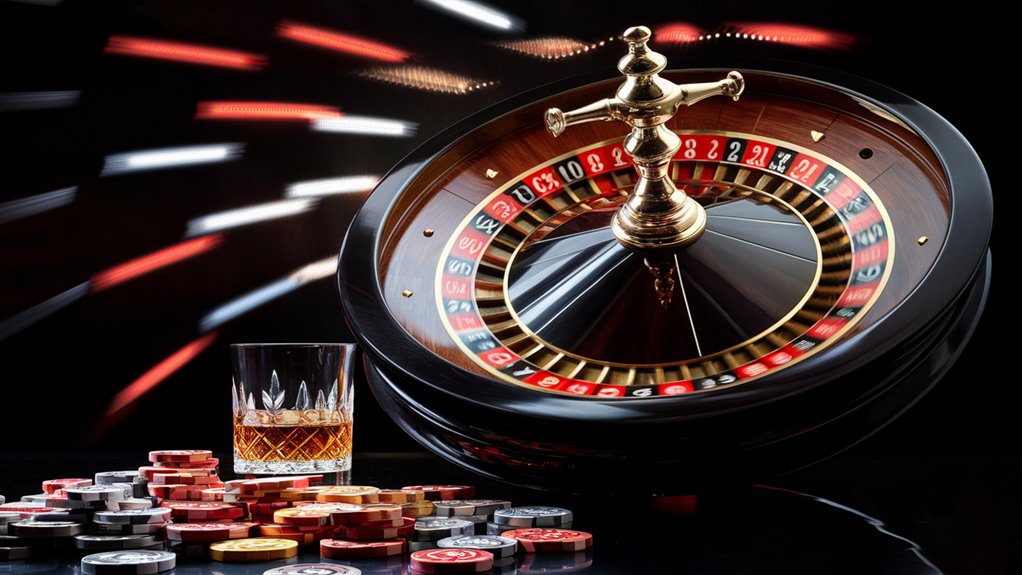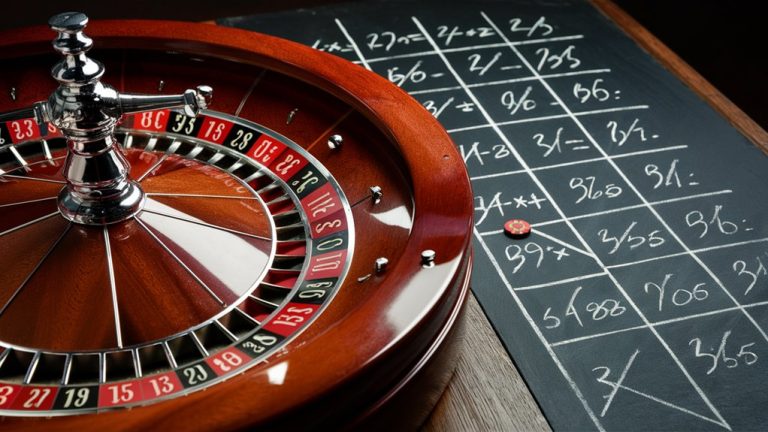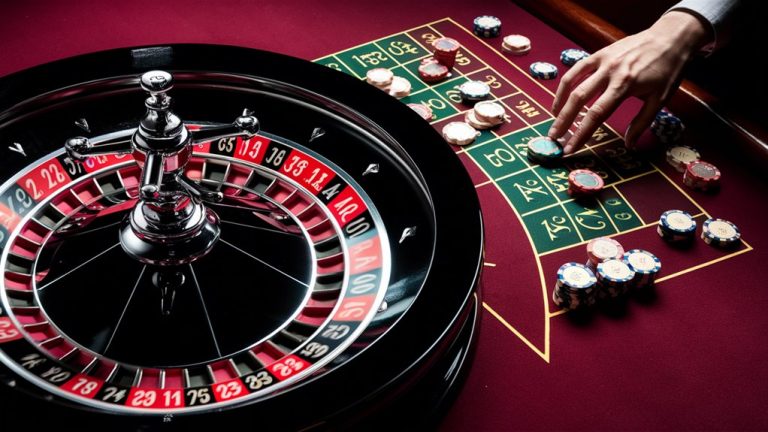
Understanding Casino Game Payout Rates
Usually, a normal gaming table has its rules and regulations set such that the casino will be able to recoup about X% of all money wagered there. This X is what one calls the casino’s hold. House rules determine the proportion of customer bets on any given wager that it will hold as winnings rather than return to its owners. The house edge out of each wager placed by players in casinos is different and could be high or low (average 60% – 65%). And that rate is above or below two thirds probably more times adjustable than you’d at first think!
Slot Machine House Edge
Dealer/Sponsor positions house advantage Percentage Odds Used in Betting: – Here the casino, craps game, or other table has to be able to hold on to a certain fraction of all money wagered in order not to lose money when it loses events. Around 90% is the average return on a typical video slot machine; as mentioned earlier it’s about. That means that for every 10 credits you gamble, players stand to make back $9. Keith Taft, who writes about gambling (and gambling systems) for the Las Vegas Sun, estimated an average return on Las Vegas Strip slot machines in 1998-1996 at slightly more than 13%. In Vegas an ordinary machine’s payout rate at one Las Casino in 2012 fell within 90-92%. The one casino with a payout rate above 100%, which Taft Illustrates Him-Non Sanctioned by anyone but has a market is playing without permission; thus they are not subject to any system regulating those sorts of things. More than 1,500 Las Vegas Strip slot machines were tested in 2001. Taft found that 70% of the payouts on quarter or bigger machines fell within 90-92%; this is a satisfactory ratio.
Las Vegas Slot Machine Games House Edge
A typical 25-cent Las Vegas Strip Slot machine in 2001-2001 returned more than 90% of our coins. However, only about 70% of quarter or larger payout percentages from these machines fell within 90-92%. If it’s true that the best time to play Las Vegas Strip Slot machines in Las Vegas was from sunset on Friday until noon Monday, then during weekdays and Fridays of January 1973-73 (without special consideration for holidays) was also one peak period.
Understanding Modern Gambling Machines
The Interactive Gambling Act of 2001 calls for electronic gaming machines (pokies) to be used only in licensed casinos and bingo centers. There are no plans to ban electronic gaming machines in fisheries management zones.
Slot Machines: RTP Between 92-97%
The Return to Player percentage in Gambling Machines
Blackjack: With Basic strategy, Up To 99.5%
If you use an optimal strategy for playing blackjack (sometimes referred to as perfect play), your theoretical returns approach 99.5%. In the real world these will be lower because of imperfect play and variations from one casino to another.
Video Poker: 97-99.3% RTP
The Return to Player in Video Poker
Table games: Better RTP Than that of Slot Machines
Slot machines have huge variations in RTP, while table games have rather high ones.
Understanding House Edges
If you deduct the Return to Player (RTP) percentage from 100, you get the house edge.
A machine operating at 96% RTP has a 4% house edge. The casino can make a profit because of this built-in advantage, however also allows players fair returns.
Regulatory Requirements And Industry Standards
Depending on the jurisdiction, the minimum payout percentage is enforced between 75-85% by governments.
However, the leading casinos, both online and land-based, generally offer substantially higher returns to remain competitive. Their data goes through regular audits and their payout percentages are verified by gaming authorities.
Long-term versus Short-term
Payout percentages come from long-term mathematical probabilities, which are computed across millions of games.
The reason for this discrepancy is variance and random number generation. But over a large ADJ period of time that statistic eventually normalizes to match the built-in return rates for games.
How to Compute Casino Return to Player
a
Understanding RTP Fundamentals
Return to Player (RTP) represents the theoretical percentage of money wagered in a gaming that will be paid back to players over time.
This principle permits players to determine a game’s fairness, and potential profits while enabling operators maintain profitable casinos.
How basic RTPs Are Calculated
The basic formula for calculating RTP involves dividing the total of player returns by the total of wagers times 100:
Total Returns Divided By Total Wagers × 100 = RTP%
For example, $950,000 in a total of player returns divided by $1,000,000 total betting sums equals 95% RTP.
Advanced RTP Factors
Statistical Requirements
A minimum of 100,000 spins to analyze for each slot machine
A data collection period that ranges from 3-6 month
A margin for error no greater than 0.1 percent
Continuous play data analyzes
Key Variables
Bonus features plus ‘special’ play modes, and side bets
The building funds of Progressive Jackpotss
Bet sizes and denominations vary.
Volatility indices by game.
Frequencies with which hits occur.
Versions of payout tables.
Calculations that are Game-Specific
Return to Player (RTP) on slot machines
Before a Random Number Generator (RNG) may be employed
Checks for regulatory compliance
Variance Monitoring
Prolonged sampling periods
Mathematical probability analysis
Return to Player (RTP) on Table Games
When The House Calculates Table Game RTP
The Odds of Frequently Played Games
User Skill Variants, House Edge Percentages
Strategy tables
Variance
Monitoring actual RTP versus its theoretical counterpart
Statistical sampling techniques
Volatility assessment
Long-term trend recognition
Payout Structures for Different Types of Casino Game
Types of Casino Game Payouts
Main Casino Payout Patterns
Three fundamental structures of game pays profoundly affect player experiences, and mathematical expectancies in the different sets of probabilities.
It is important to understand these different structures if one wants to avoid making uninformed gaming decisions.
Fixed Payoffs
A player wins money equal to the amount bet when they win.
This consistent arrangement permits exact budgeting of your gam bankroll and clear predictions.
Progressive Jackpots
Progressive jackpot systems are devices in which awards slowly accumulate.
A major low level of gambling feature is to give the potential for sporadic mega-wins, of which the most famous kind are slot machines and traditional table games as Caribbean Stud Poker.
These systems are dependent upon increasing jackpots through multiple winning combinations until finally some lucky player breaks the bank. It inherently requires that smaller pieces be paid out more frequently than large chunks are won.
Proportional Payoffs
Award winner shares are calculated as per total sum of wagers and Why Some People Are More Prone to Gambling Addiction
Destined for widespread use in poker tourneys and pool betting, these types of game structure bring dynamic profit formulas matching the levels of bet action.
Volatility Characteristics
Each pay mechanism carries a distinct volatility profile.
Fixed payouts: gives consistently reasonable returns
Progressive structure: offers small chance for enormous winnings.
Proportional structures: Divide risk and reward of them games based upon player pool trends
Return Metrics Explained by Example and Comparison
Return to Player (RTP) ratios lay out statistical methodologies for probable payoff’s, so that Payout structure specific patterns of prize distribution and winner frequencies in various types of games are determined.
Looking at House Edge vs Payout Rates Understanding Casino House Edge vs Payout Rates: A Complete Guide What Are House Edge and Payout Rates? The basis of Casino mathematics lies in two fundamental quantities that reflect how profitable a game is for the casinos and yet at the same time returning money to players: house edge and payout rates. These two measures are entirely interdependent on each other, affected inversely by one another but nonetheless still sharply etching the amount it is likely for any specific player who stands at an empty table and throws down a wad of cash to end up with nothing!
House Edge Explained
The house edge represents the casino’s statistical advantage, expressed as a percentage of each wager. For example, in American roulette there is a house edge of 5.26%; this means that the casino mathematically expects to hang onto $5.26 from every $100 you bet over extended play. This percentage remains constant whatever your bet or however long you play.
Understanding Payout Rates (RTP)
Payout rates, also known as Return to Player (RTP), describe the percentage of total wagers over time that get returned to players. In other words: a game with 96% RTP should theoretically give back $96 and keep anything from within its house edge on each one hundred dollar bet. The exact relationship between these figures can be set out in a simple formula: House Edge = 100% – RTP. How to Play Online Poker for Real Money

Strategic Game Selection
Key Consider Considerations for Players
Slot machines typically offer RTPs between 92-97% Table games generally provide better odds with lower house edges Video poker variants often feature some of the highest RTPs Progressive jackpots may offer lower base RTPs
Making Informed Decisions
To maximize potential returns, look for games that combine low house edges and high payout rates. This strategy maximizes your time on the floor (and therefore opportunity to win) within mathematical parameters determined by the casino itself.
Impact on Gaming Strategy
Understanding both house edge and payout rates allows players to: Choose games known for their peak win rates Manage their money more effectively Make smarter bets Develop their own strategy of gameplay For best results, look for games that offer the best synergies between these two measures.
Finding Reliable Payout Information
How to Find Reliable Casino Payout Information Official Regulatory Sources
Verified payout data comes primarily from official gambling watchdogs such as the UK Gambling Commission, as well as the Malta Gaming Authority.
These relevant governing bodies keep detailed records of Return to Player percentages through systematic audit procedures; along with mandatory reporting for licensed operators. What Are the Most Trusted Online Casinos?
Independent Testing & Verification
Dependable, out-sourced test labs offer necessary verification services for casino payouts.
Major names in the field such as eCOGRA and GLI require that their reports meet specific test standards and game manufacturers’ specifications for utmost reliability. This is true even though the testing agencies are independent from any software or hardware vendor— their findings should support what your casual players tell you.
Real-Time Payout Tracking
Monthly Reports & Certificates
Established online casinos always make public regular payout reports that include:
Verified RTP percentages
Time-stamped audit trails
Performance data by way of games
Certifications from testing agencies
Game-Level Analysis
Attention to individual game RTPs instead of the average across all casino games for:
More accurate payouts for specific games
Game specific performance management see more
Confirmation of the current rate at which winnings should be coming in
Precise, current gaming intelligence.
Monitor updates regularly as payout rates may fluctuate based on game modifications and platform changes.
Check all data from multiple sources that are known to be trustworthy for the highest confidence possible.
Maximizing Your Winning Potential
Maximizing the Potential for Winning Return-to-Player (RTP) and Game Selection Understanding
Mathematical analysis has as its foundation Return-to-Player proportions / percentages / ratios.
Video poker variations such as Deuces Wild console RTPs at 99.54%”, while best blackjack strategy has an RTP 99%. — Legal Gambling Sites in the US (XXXXX) means that players who know the rules and how to play beat this game with any consistency or accuracy can then use Deuces Wild in other parts of their gaming strategy for maximum edge. These two games are optimal (because Deuces offers such high Rtp-s) from a mathematical point-of View. They give the most powerful advantage to strategic players.
For Maximum Returns Expected Value (EV) calculations lay the groundwork for profitable game play.
Multiply game’s RTP by bet to determine potential returns. A slot machine offering an RTP of 96% when you bet $100 has expected return of $96 coming back to you. The four-dollar house edge is not only generating it, it also head off risk altogether! This mathematical approach helps spot the most lucrative gaming opportunities because of its strict attention given entirely towards Dollars pay-back rather than flattery on boundaries or demarcations.
Strategic Management of Bankrolls and Variance
Effective management of variance calls for careful bankroll allocation between different categories (game types ( bonus Get me the data on free! where from). Games offering lower volatility with higher RTPs will earn users more consistent and regularly smaller wins in this fashion.
Maintain a slot bankroll at a minimum of 50x your average bet and a table game one at 100x.
Results forwarding and reversed: tracking documents can help identify those games where practical returns are nearly exactly the same as theoretical or RTPs set by nature itself, thus optimizing choice based upon potential gain if things were “just right”. And such is mathematically justified to anyone who has any brains at all! (Y. Miura says) (XV 80 points)).
Advanced Strategy Implementing
Data-driven game play combines best game selection with strict bankroll management.
Brandish Maximum Shovels while keeping at any cost to fixed bet patterns.
Regular.Key performance metric (Kpm) analysis ensures strategy development and also (lw) maximum value maximization within certain parameters: risk profiles set by the establishment.



